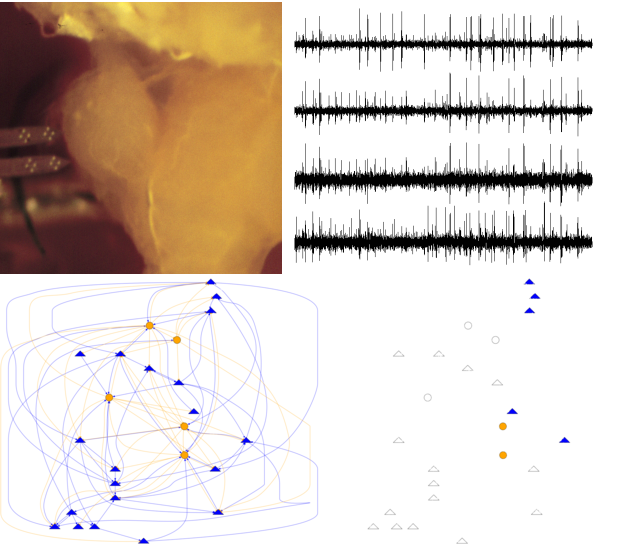
Dipartimento di Matematica Guido Castelnuovo, Università Sapienza Roma
Abstract: Neurophysiologists are nowadays able to record from a large number of extracellular electrodes and to extract, from the raw data, the sequences of action potentials or spikes generated by many neurons. Unfortunately these "many neurons" still represent only a tiny fraction of the neuronal population which constitutes the network. Using association statistics such as cross-correlograms, they try to infer the structure of the network formed by the recorded neurons. But this inference is compromised by the tremendous under-sampling of the neuronal population and by the errors made during the sequences reconstruction. This yields a "network picture" usually called a "functional network" whose features depend strongly on the recording conditions (such as the presence/absence of a stimulation). Considering that reconstructing the network formed by the recorded neurons is an ill-posed problem, I propose to focus instead on the "generative probability distribution" of the network: what is the probability to have a connection from a type A neuron to a type B neuron? Is the probability to have a connection from neuron Y of type B to neuron X of type A dependent on the presence of a connection from X to Y? To that end, the key idea is to simulate first the whole network using a simplified neuronal dynamics and different (parametrized) generative probability distributions. The association statistics obtained from the simulations and from the actual data are then compared and the model parameters are tuned in order to improve the match. This type of approach is now commonly used in several fields under different names like "Approximate Bayesian Computation" or "Simulation based Inference". I will illustrate on a idealized case, inspired by the first olfactory relay of an insect, how the "over representation of reciprocal connections" can be addressed.

